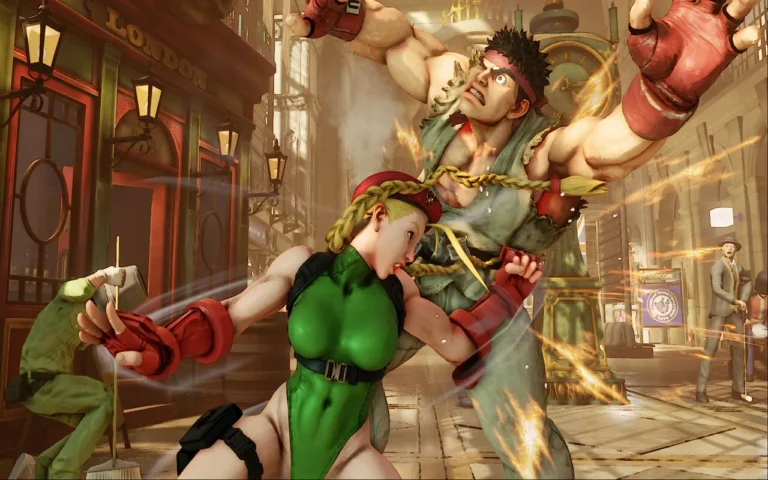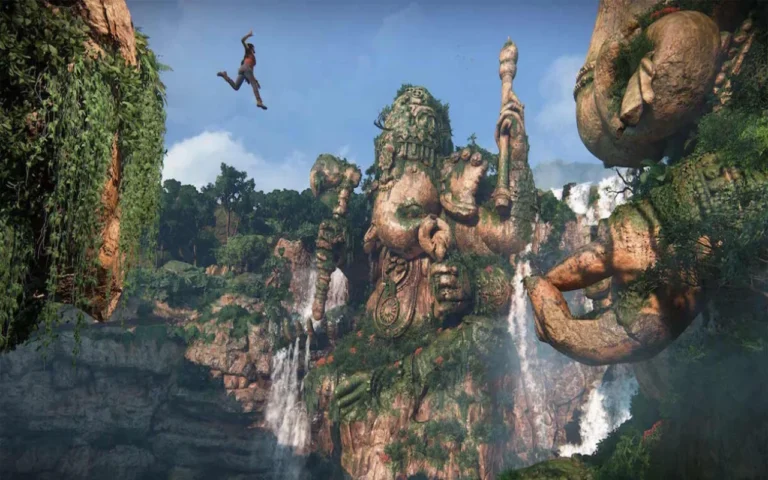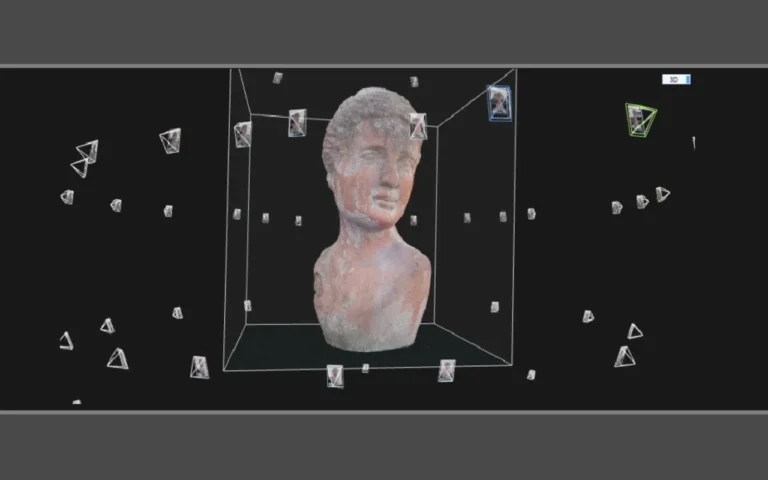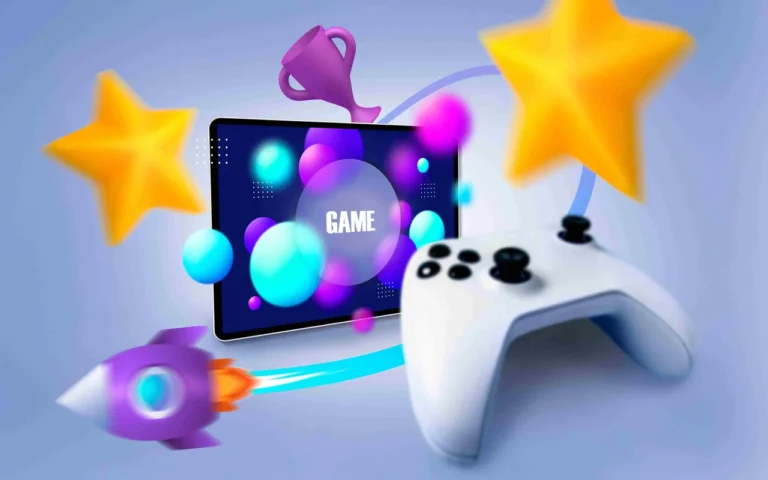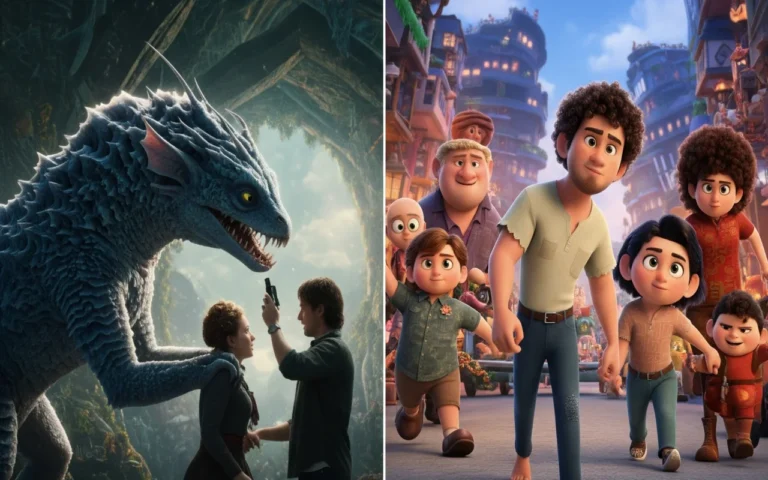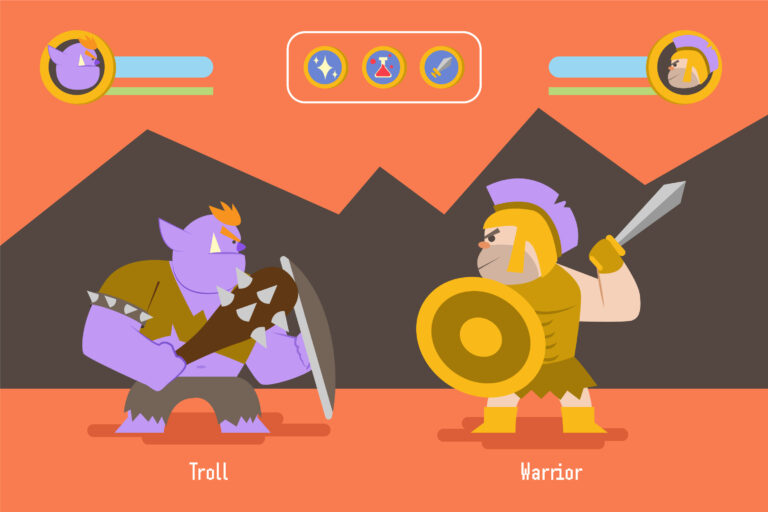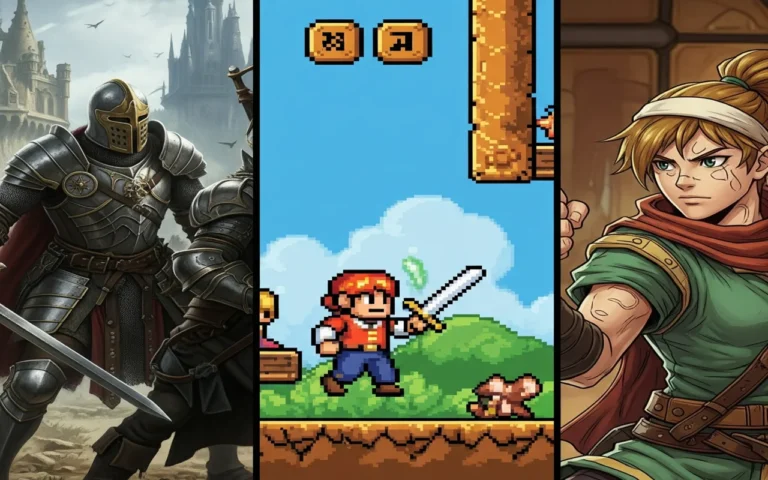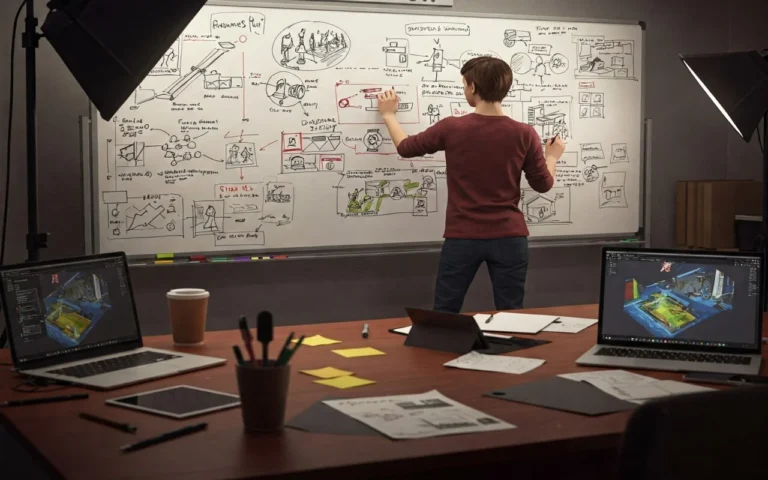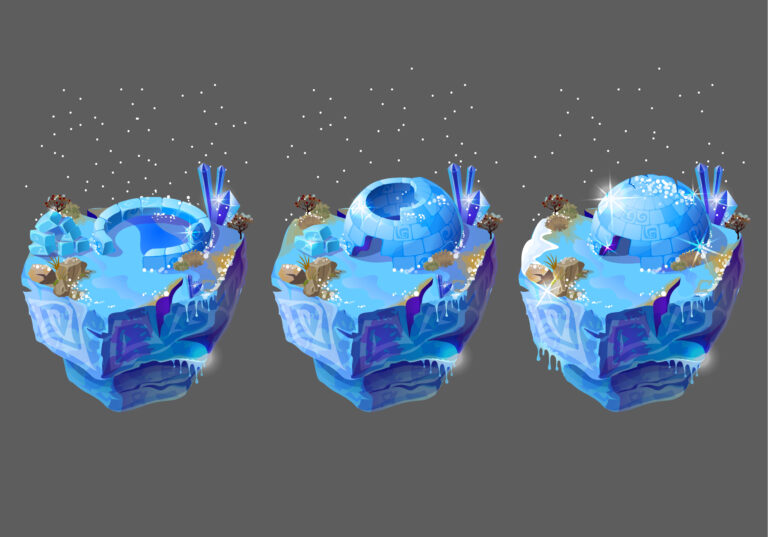Art in video games is now far more than just surface beauty. A game’s visual elements help establish its narrative, tone, and player immersion. Game art studios that use unique art styles consistently create visually distinctive, memorable, and emotionally impactful productions.
In this guide, we will explore some of the most iconic games with unique game art styles that define modern gaming, not only enhancing the gameplay experience but also shaping the identity of each title.
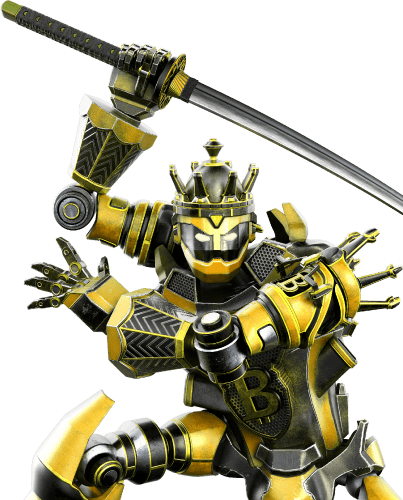

Need Game Art Services?
Visit our Game Art Service page to see how we can help bring your ideas to life!
What Makes a Game’s Art Style Unique?
A game’s art style reflects its setting, vision, and tone, influencing every visual element from the environment to character designs. A unique art style is characterized by its specific approach to color, shapes, textures, and animation techniques.
For instance, a game utilizing pixel art can create nostalgia, while a watercolor-inspired style might establish an emotional atmosphere. Unique visuals engage players by conveying themes and emotions, significantly contributing to the overall player experience.
Through bold creative choices, developers find a unique art style, shape narratives, set the mood, and etch games into players’ memories. Understanding what makes an art style unique reveals why some titles linger long after the credits roll.
The Difference Between Graphics and Art Style
While “graphics” refers to the technical quality of visuals, such as realism and resolution, “art style” centers on the visual approach and creative decisions made during the design process.
Graphics focus on rendering technology and performance, but art style encompasses the visual language, such as whether a game uses hand-drawn illustrations, 3D realism, or pixel art.
Graphics are about technical prowess, think resolution, detail, texturing, and polish, while art style is the creative vision, defined by choices in color, shape, and mood.
For example, Minecraft captivates with its blocky charm, while Red Dead Redemption 2 stuns with lifelike realism. Both triumph because their stylized or realistic art styles sync perfectly with gameplay and story, proving visual identity outweighs raw technical power.
How Art Direction Shapes Player Experience
Art direction plays a vital role in shaping a player’s emotional bond with a game. It involves decisions regarding the overall design, visual theme, and character color palettes that must align with the game’s atmosphere and narrative.
Whether setting a stage in a dark, dystopian world or a bright, cartoony one, colors, lighting, and composition stir emotions like awe, tension, or serenity. They guide the player’s emotional engagement, helping them feel the wonder, joy, or tension the game aims to convey.
Role of Visual Storytelling in Modern Games
Visual storytelling is a powerful mechanism that allows games to communicate complex narratives without using words. Through character designs, settings, and color choices, games can effectively express backstories, themes, and emotions.
Titles like Gris or Journey utilize their art to convey stories of growth, discovery, and solitude, demonstrating how visuals can speak louder than dialogue. In modern games, visual storytelling is integral to providing depth and context to the gameplay experience.
Sable (2021)
Sable‘s distinct art style is a primary reason the game is such an elevated experience. The world is a breathtaking desert inspired by the artwork of Moebius and French comics, featuring meticulously hand-drawn visuals.
The deliberate use of color theory with earthy, soft tones and organic forms generates a reflective and tranquil atmosphere that encourages players to explore. The visual style is crucial to the narrative, actively supporting the game’s themes of adventure and self-discovery.
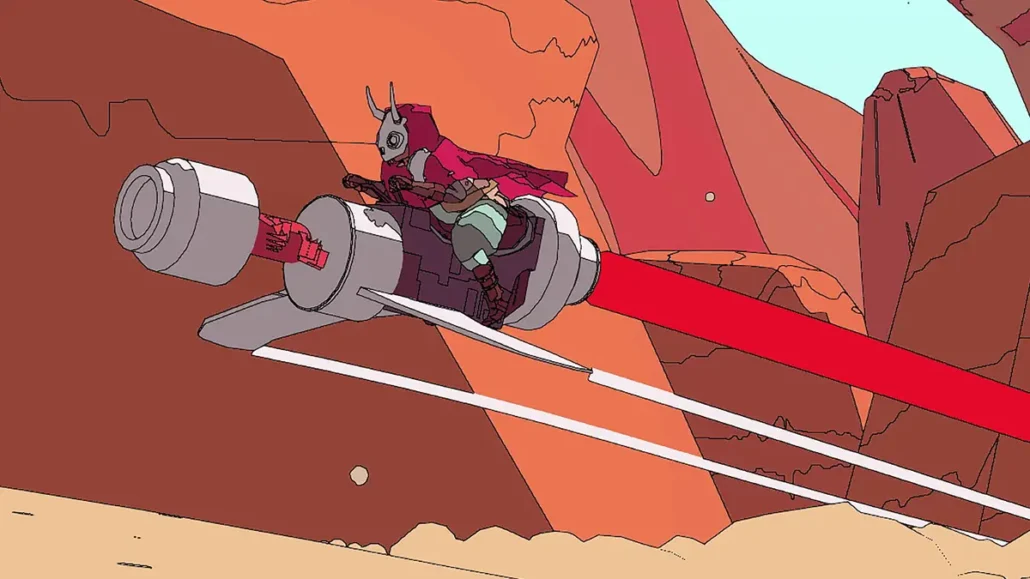
French Comics and Desert Dreamscapes
The art direction in Sable is deeply influenced by the minimalist storytelling and intricate linework found in French comics. The game’s visuals reflect vast, serene desert dreamscapes, where towering structures and sweeping sand dunes inspire a sense of awe.
This unique visual approach gives players the feeling they are exploring a hand-painted world, layered with mystery and beauty.
Cuphead (2017)
Cuphead stands out as one of the most visually unique recent games, flawlessly bringing the aesthetic of 1930s animation to life.
The game uses watercolor backgrounds and hand-drawn cel animation to perfectly mimic old-school cartoons, complete with fluid motion and exaggerated characters. This retro style is not merely a gimmick; it enhances the experience, creating a fast-paced, quirky world where movement is visually expressive.
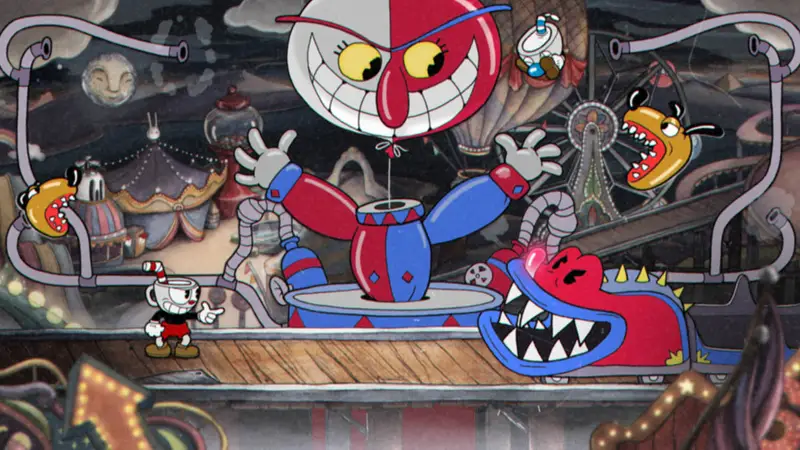
Bringing 1930s Animation to Life
Cuphead pays homage to the golden age of animation, channeling the art styles of classic studios like Fleischer Studios and Disney.
The vintage aesthetic and bouncy, fluid animation fully immerse players in a world that is both new and nostalgic. The dedication of the creators to evolving and preserving this art form is evident in their choice to use traditional animation techniques in a modern game.
Gris (2018)
Gris is a title where the artwork itself conveys an emotional story. The beautiful, watercolor-inspired style, which breaks away from the realistic art in games, is central to the narrative, with different colors symbolizing various stages of grief.
The delicate textures, soft brush strokes, and vibrant hues establish an emotional connection that shifts as the character moves through the process of grieving. Gris’s visual artistry showcases how games can evoke profound emotions through visuals alone.
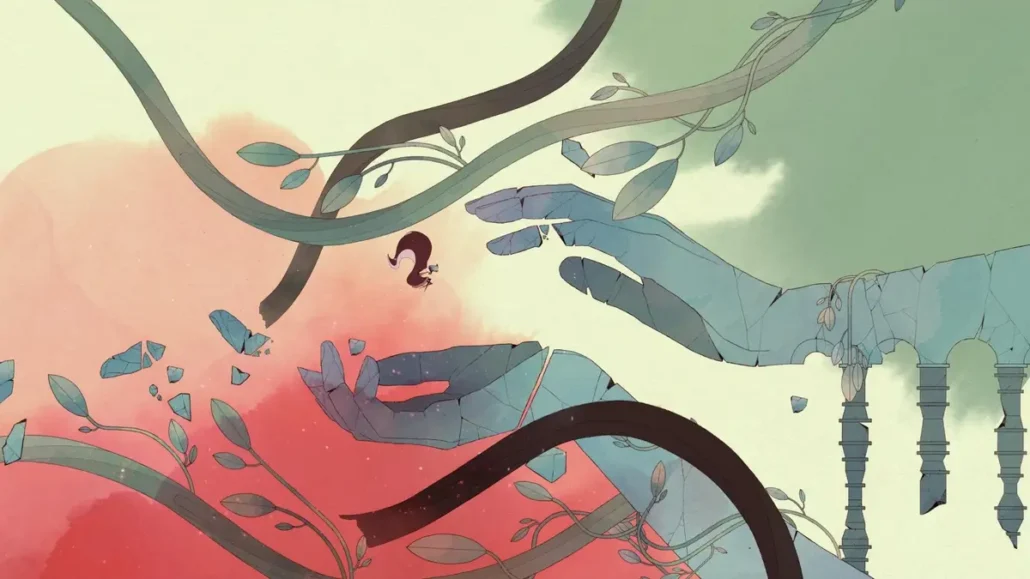
Watercolor Emotions in Motion
The watercolor technique in Gris serves as a powerful storytelling tool, going beyond a simple visual choice. As the protagonist, Gris, travels through the world, the colors change in direct correlation with her emotional state, drawing the player closer to her journey.
This seamless integration of narrative and art style demonstrates how a carefully selected visual approach, combined with game design psychology, can transform a game into a deep emotional journey for the player.
Okami (2006)
Okami is a visually striking game because its core art style is based on traditional Japanese sumi-e ink painting. The game’s world feels like a living canvas, where brushstrokes come alive, lending the game a distinctive air of mysticism and beauty.
The vibrant color contrasts and fluid ink work create an immersive world steeped in Japanese mythology, where the art enhances both the atmosphere and the mechanics of the gameplay.

Painting Ancient Japan with Ink
Okami’s art style is a tribute to the elegance of traditional Japanese ink painting. Every scene resembles a moving painting, with characters and landscapes that appear to be painted directly onto the screen.
The blend of mythological storytelling and ink art transports players into a captivating visual experience rooted in ancient tradition.
Limbo (2010)
Limbo creates a haunting atmosphere using a minimalist, monochromatic art style that focuses on negative space and shadows. The art direction heavily employs silhouettes and extreme contrasts to create a sense of unease and mystery.
This straightforward yet minimalist game art produces a uniquely atmospheric experience where every light source and shadow is charged with meaning.
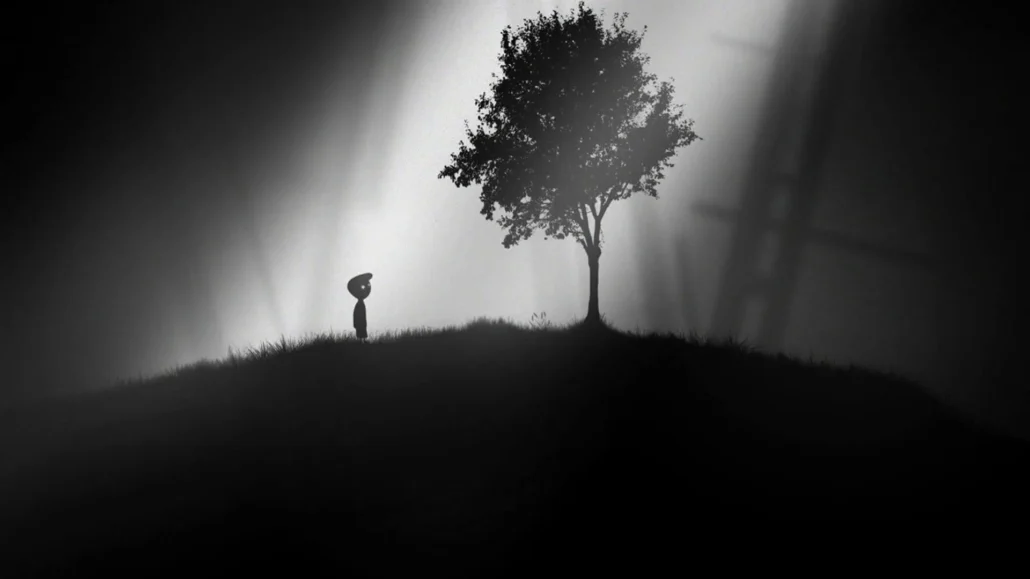
The Art of Shadows and Negative Space
In Limbo, the deliberate absence of color intensifies the narrative’s emotional weight. The strategic use of negative space and shadows perfectly aligns with the game’s themes of discovery and survival, making players feel isolated and vulnerable. This visual style heightens the tension, making every single moment feel more impactful.
Hollow Knight (2017)
Hollow Knight develops a captivating world by blending detailed pixel art with dark fantasy elements. The game’s hand-crafted environments are filled with intricate details, from the ancient ruins to the smallest rock.
The game’s thematic cohesion and stunning visuals result from the dark, atmospheric setting combined with the fluid nature of the pixel art.
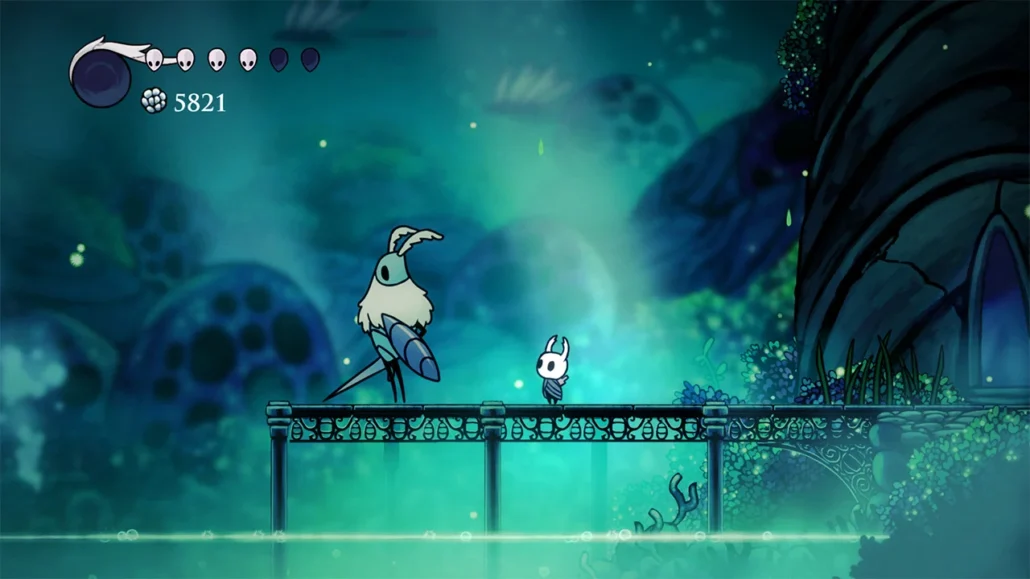
Pixel Art Meets Dark Fantasy
Hollow Knight utilizes pixel art in a way that is both innovative and nostalgic. The detailed characters, rich world-building, and atmospheric environments demonstrate the potential of pixel art to create a deep, immersive experience.
This fusion of intricate pixel details and dark fantasy elements provides players with a rich, visually engaging world to explore.
Journey (2012)
Journey adopts a minimalist approach to its art style, featuring flowing character designs and vast, sweeping desert landscapes.
The visual focus is on evoking emotion through light, space, and color, rather than through complex models or detailed textures. This simplicity allows players to connect deeply with the emotional core of the game’s story and world.
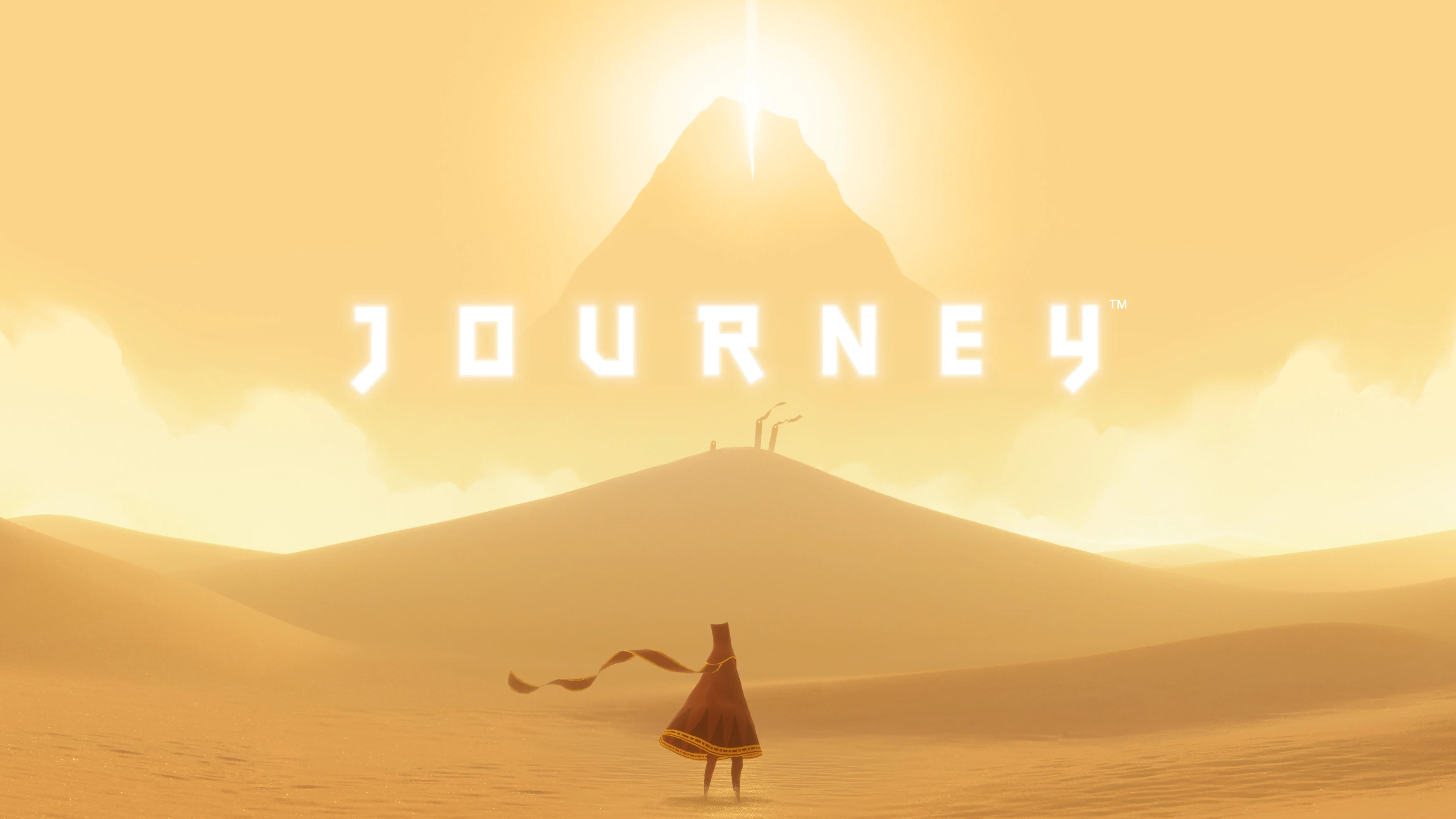
Minimalism and Desert Serenity
The wide, empty desert landscapes in Journey communicate a dual sense of discovery and isolation. The game’s art direction embraces minimalism, which directs the player’s focus to the journey ahead instead of intricate details.
This deliberate choice enhances the theme of solitude and exploration, making the environment feel both intimate and majestic.
Psychonauts (2005)
Psychonauts‘s whimsical and surreal art style perfectly complements its outlandish story. The game’s colorful environments and imaginative, cartoonish characters reflect the mind-bending worlds found within the characters’ psyches.
Because each mental landscape is visually distinct, the player can explore a wide variety of bizarre settings while investigating the mind’s inner workings.
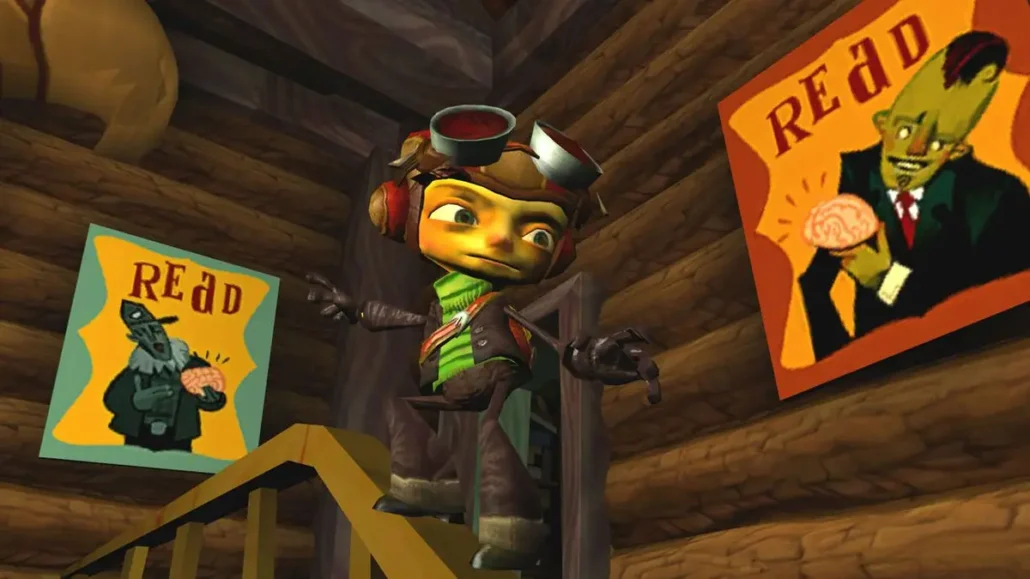
Surreal Worlds Inside the Mind
The art direction in Psychonauts fully embraces surrealism, with every level designed to represent a different element of the characters’ minds.
The vibrant, bizarre environments are not only visually engaging but also mirror the game’s unique narrative and offbeat humor. This distinct art style allows Psychonauts to create eccentric, memorable worlds that captivate the player’s imagination.
No Man's Sky (2016)
While famous for its procedurally generated worlds, No Man’s Sky‘s art style is notable for its use of vibrant, colorful palettes and astonishingly alien landscapes.
The game’s visual style emphasizes the inherent beauty of exploration, with every planet offering visually striking and unique vistas. The dynamic visuals change constantly as the player discovers new worlds, ensuring a perpetual stream of visually stunning experiences.
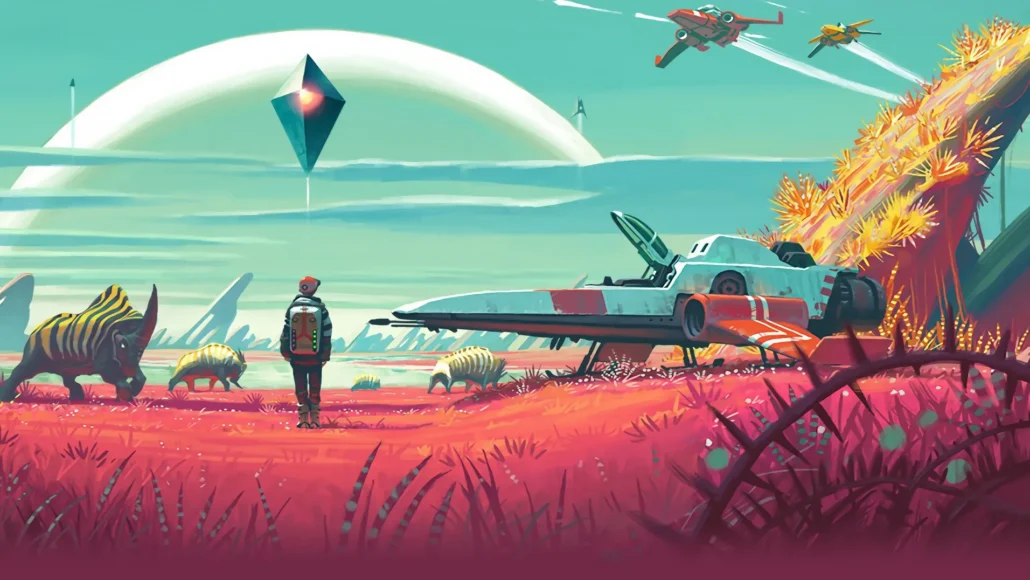
Generating Beauty in an Infinite Universe
In No Man’s Sky, the procedurally generated worlds do more than just look different; they feel dynamic and alive. The art style delivers a visually rich, ever-evolving experience that adapts continuously to the player’s discoveries.
Whether players are flying through vibrant skies or exploring alien landscapes, the visual style consistently underscores the universe’s beauty and vastness.
Ape Out (2019)
Ape Out uses high-contrast colors and minimalist designs to create a striking art style that dramatically enhances its fast-paced gameplay.
The game’s action sequences are mirrored by the intensity of its explosive colors and bold, blocky shapes. The chaotic art style complements the gameplay, producing a visceral experience where every encounter is tense and exciting.
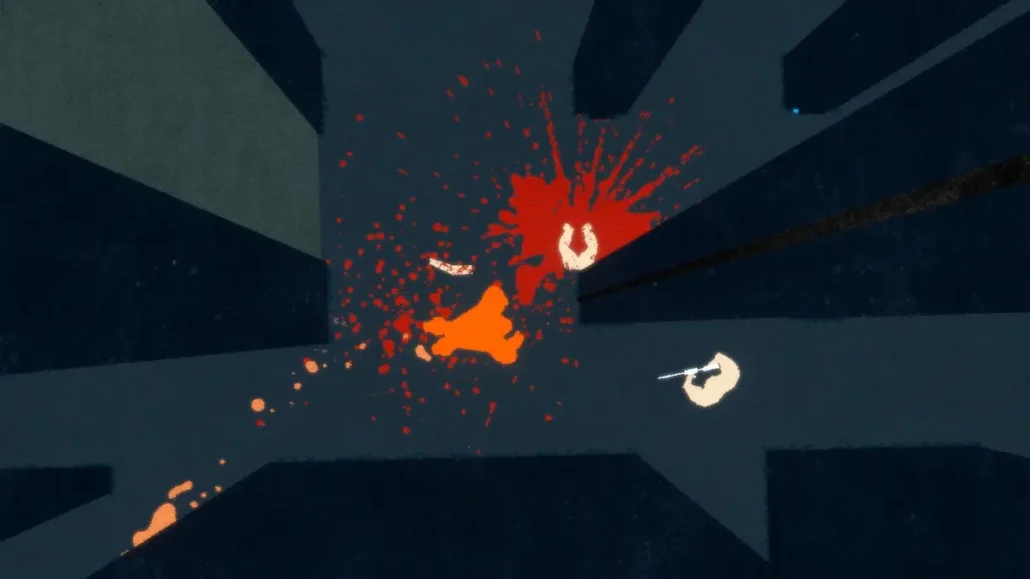
High-Contrast Action Art
Ape Out‘s visual style relies on abstract shape language and high-contrast color schemes to establish a frenetic, energetic atmosphere.
The bold application of black, red, and white heightens the sense of chaos, perfectly reflecting the game’s action-packed narrative. This art direction directly complements the gameplay, making every action feel intense and explosive.
Transistor (2014)
Transistor creates a visually unique world by fusing cyberpunk elements with Art Nouveau. The environments, character designs, and interface feature organic shapes and fluid lines inspired by Art Nouveau, while the cyberpunk aesthetic introduces futuristic elements.
The resulting combination is a visually compelling world that is both high-tech and elegant.
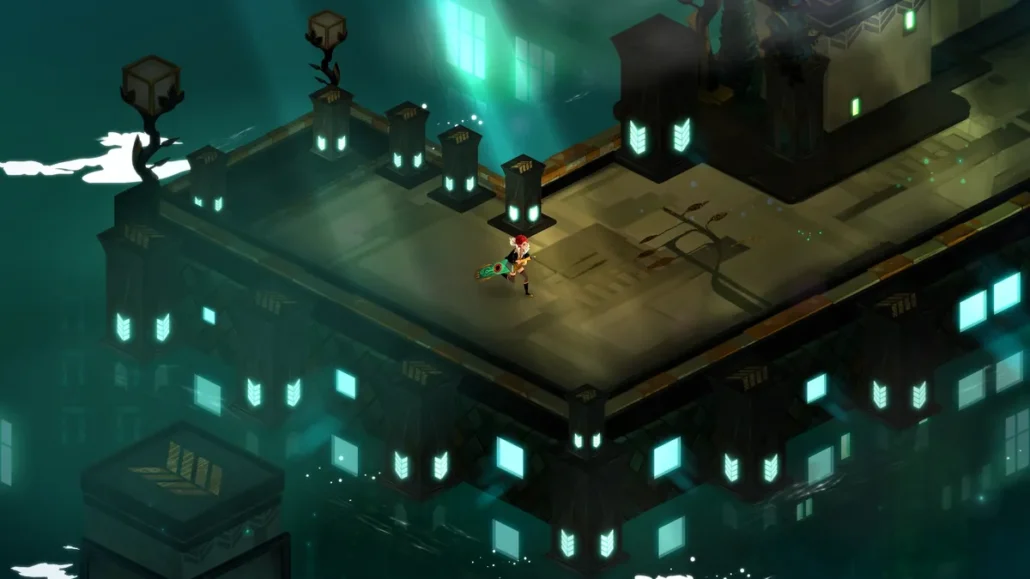
Cyberpunk Meets Art Nouveau
Transistor’s art style merges the flowing, organic shapes of Art Nouveau with the sleek, metallic world of cyberpunk.
This synthesis creates a visually stunning environment that feels both timeless and futuristic, deepening the game’s atmosphere and narrative. The merging of these two distinct styles significantly elevates the game’s storytelling and world-building.
Monument Valley (2014)
Monument Valley features a unique art style drawn from the impossible architecture found in M.C. Escher’s drawings.
The game’s visual components prioritize optical illusions and geometric shapes, creating a puzzling and dreamlike world. The shifting structures and clever use of perspective add a layer of visual intrigue that improves the gameplay.
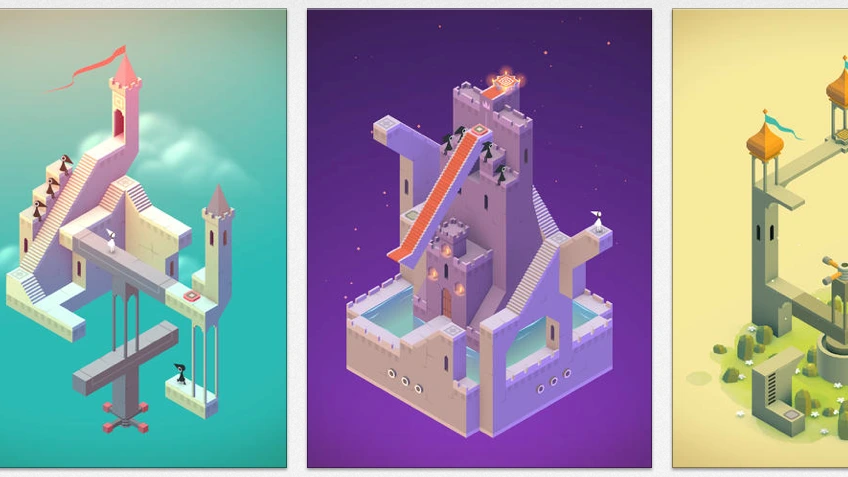
Escher-Inspired Architectural Puzzles
The art direction of Monument Valley is directly inspired by M.C. Escher’s mind-bending structures, resulting in environments where the laws of physics appear to break and bend.
The visual illusions and geometric designs challenge the player’s perception, making each puzzle feel like a work of art. The game’s unique visual style successfully transforms it into an interactive architectural marvel.
Ashen (2018)
Ashen creates a bleak, atmospheric world by combining hand-drawn visuals with 3D environments. The game’s art style uses expressive yet simple character designs and muted tones to convey the somber mood of its narrative.
This fusion of 3D and 2D elements produces a visually compelling world that feels vast yet personal.
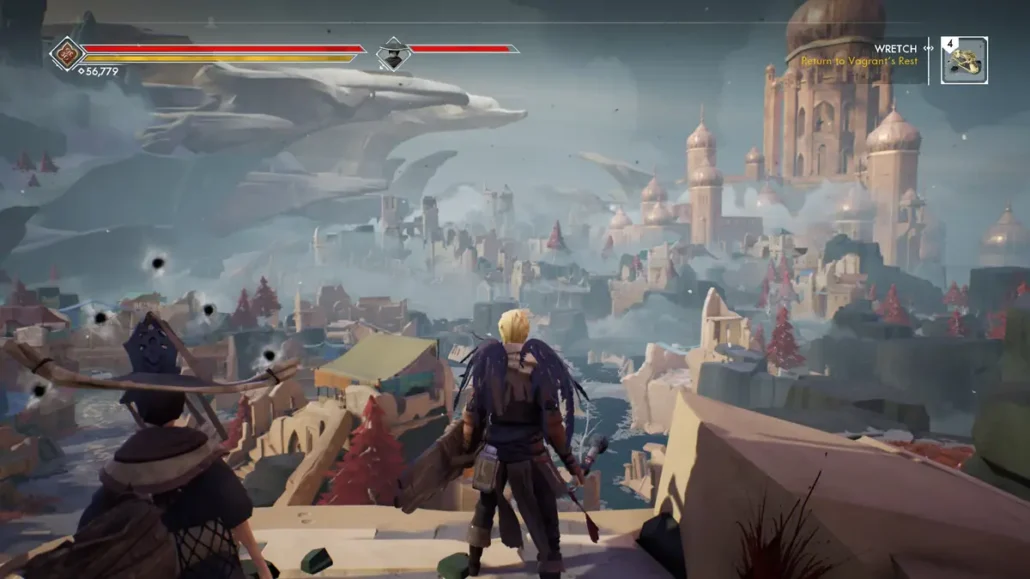
Hand-Drawn Meets 3D in a Bleak World
Ashen’s art style combines 3D models with hand-drawn aesthetics to deliver a unique visual experience. The monochromatic, muted color palette emphasizes the world’s bleakness, while the character designs give it a distinct, hand-crafted feel.
This combination enhances the narrative, fully immersing players in its melancholic, hand-painted animation atmosphere.
Little Devil Inside (Upcoming)
Little Devil Inside creates a visually stunning world that feels both surreal and tangible by blending an illustrated art style with elements of realism.
The environments are detailed and lush, yet the characters feature exaggerated designs. This contrast between stylization and realism results in a uniquely striking visual experience.
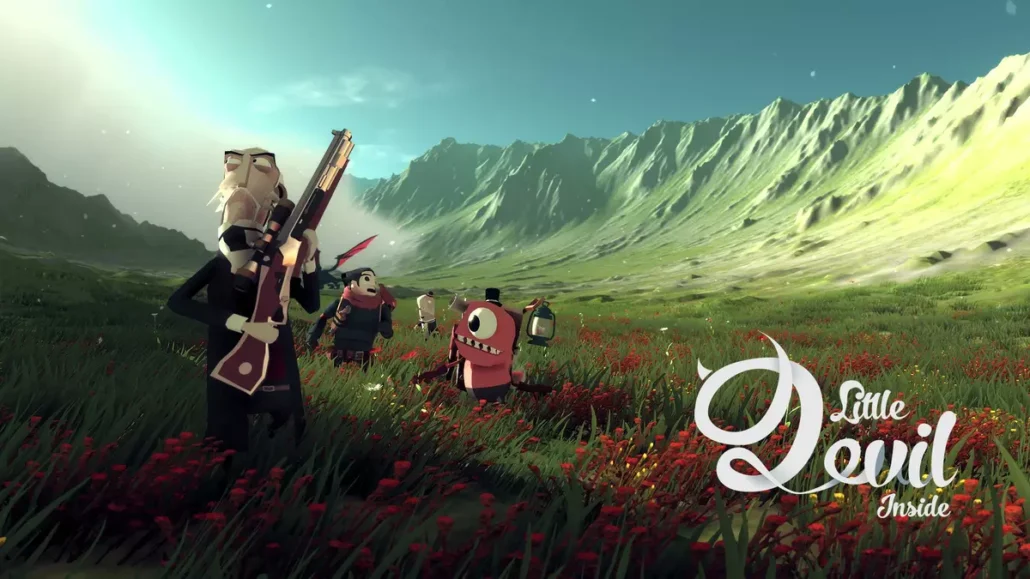
Blending Realism with Illustrated Worlds
The art style of Little Devil Inside merges whimsical, illustrated characters with realistic landscapes, creating a visually rich world that is both imaginative and grounded. This blend of styles adds a layer of depth to the game, making it emotionally engaging and visually unique.
Why Do Developers Prioritize Unique Visual Styles Today?
In today’s crowded gaming landscape, where thousands of titles are released every year, you must stand out!
Developers prioritize unique visual styles to differentiate their games and create memorable experiences.
Standing Out in a Saturated Market
A distinctive visual style is a powerful tool for differentiation in the increasingly competitive gaming industry.
A striking art style helps a game gain attention, build a following, and stand out among similar-looking titles. Games like Cuphead or Hollow Knight demonstrate how visual uniqueness can drive success.
Art as Identity: Branding Through Visuals
For many developers, art is a key element of branding and is not simply a design choice. A game’s visual style helps establish its identity and create a lasting impression. Developers use art to reflect their vision, creating a memorable experience that players will forever associate with the game.
How to Find Your Own Art Style as a Game Developer
Finding a unique art style involves collaboration, experimentation, and a deep understanding of what the game should convey. An art style must reflect the essence of your game’s world, narrative, and gameplay.
Learn from the Greats
Study the works of influential developers and artists to gain valuable insights into how to approach your game’s art style. Analyze what makes games with distinct art styles successful, which can help you find your own unique path.
Experiment with Techniques and Mediums
Experimentation is the best way to discover your art style. Play with various techniques, from digital painting to pixel art, and explore different mediums. Trying unconventional methods may lead to groundbreaking results that define your game’s visual identity.
Collaborate with Concept Artists and Art Directors
Collaboration is essential for developing a unique art style. Work closely with concept artists and art directors to define the visual direction and refine your ideas, which can bring your vision to life with a professional touch.
Final Words
Distinctive art styles in gaming go beyond mere visuals; they craft immersive experiences, convey narratives, and leave a lasting impact.
From the delicate watercolor vistas of Gris to the 1930s cartoon flair of Cuphead, a game’s visual identity is key to its success. Whether you’re a gamer or a creator, exploring these striking art styles reveals how bold visuals can transform a game into an iconic masterpiece.
FAQs
Why do some games adopt unique art styles over realism?
A unique art style gives a game identity, evokes emotion, enriches storytelling, and makes visuals memorable.
What are examples of distinctive art styles in games?
Pixel, hand‑drawn, minimalist, paper‑craft, cel‑shaded, and surreal visual styles make standout games.
What is pixel art’s appeal in modern gaming?
Pixel art blends nostalgia and accessibility. Modern creators use it for emotional resonance and stylistic charm.
Why do indie titles often use unique art styles?
Indie games like minimalist black‑and‑white or vibrant hand‑painted worlds offer visual flair on limited budgets.
How does stop-motion art translate into games?
Stop‑motion-style games use real physical textures and frame-by-frame craft to create a tangibly nostalgic aesthetic.
What makes the Hand‑Drawn style stand out?
Games like Cuphead mimic 1930s animation with hand-drawn frames, surreal visuals, and watercolor backgrounds.
How does surreal or abstract geometry impact game visuals?
Monument Valley uses impossible architecture and M.C. Escher–inspired design to create visually striking levels.
How can games create dreamlike, surreal visuals?
Gorogoa delivers hand-drawn, surreal imagery that blends mythic storytelling and puzzle design.
